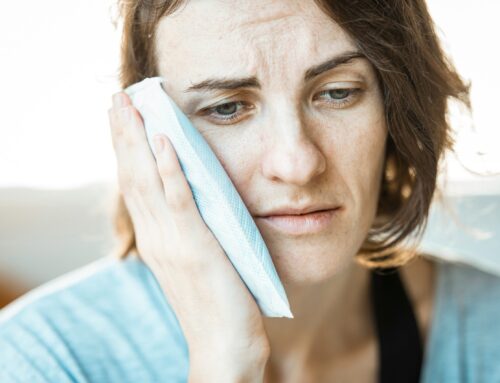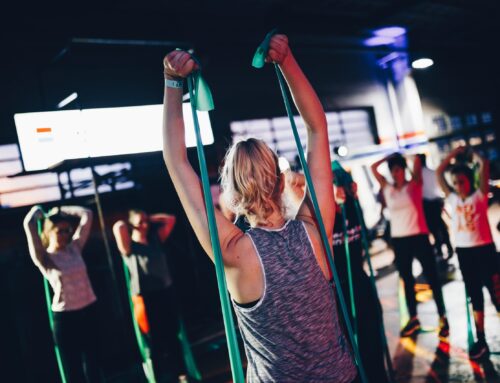But Are They and Does It Matter If It Is?
“Hello, nice to meet you, I’m Sam Bowden. What brings you in to see me today”? A simple question, asked thousands of times. I’ve lost count of the number of times a patient has answered with ” it’s my knees, they’ve gone!”. As a consummate professional, I fight the instant, infantile reaction to answer with ” well you better get after them quick”!
I blame my father for my terrible sense of humour, but maybe I should thank him for providing a great illustration that some arthritic joints don’t necessarily become painful. I have no reason to think that some cosmic force has chosen to spare him osteoarthritis in the knees, whilst failing to spare his back, hips, thumbs and big toes. What I do know is that well into his seventies, he still manages a 10K walk every morning with his dogs and his knees seem to be holding up pretty well!
So why are some osteoarthritic joints painful and some aren’t?
Knee Pain – What is Cartilage?
Cartilage is a connective tissue made up of specialised cells called chondrocytes. There are 3 types:
- Fibrocartilage found in the jaw, knee meniscus and spinal discs.
- Elastic cartilage is what makes up the wobbly bit of your ear.
- Hyaline cartilage which covers the articulated surfaces of bones.
When Knee pain patients get told their joints are going or that they have worn cartilage, it is hyaline cartilage which is being talked about. In the knees this is complicated somewhat, by the presence of a meniscus, which is made of fibrocartilage. It’s normally the meniscus which is affected when someone has a ‘torn cartilage’.
Knee Pain – What is Osteoarthritis?
Osteoarthritis refers to the degeneration of articular (hyaline) cartilage and underlying bone. It’s more common from middle age and can lead to swelling and pain in the joint. There are some risk factors such as a family history, bone deformity, previous joint injury and obesity.
It’s not the same as Rheumatoid Arthritis, Rheumatism or Osteoporosis.
Knee Pain – What Helps Reduce Pain?
Articular cartilage is aneural, which means it doesn’t have its own nerve supply. This probably explains why studies do not associate cartilage wear with pain. It is far more likely that damage to the subchondral bone below the cartilage is where the pain receptors are activated.
Applying ice to your knees, taking Non Steroidal Anti inflammatory Drugs like Ibuprofen or having a steroid injection can all provide some temporary pain relief.
The great news is that a safer and easier way of getting some relief, is to get moving!
It may seem a contradiction, that moving a painful arthritic joint has been shown to be just what the knees want and need. However research has shown that recreational runners are far less likely to develop osteoarthritis in the knee and hip, when compared to non runners!
What if I already have a bit of osteoarthritis? Reassuringly, research appears to show that those patients who walked an average of 7000 steps a day did not develop any worsening of osteoarthritis two years later.
What if my knees are too painful to walk or run? The trick here is to find a type and level of exercise that your knees can tolerate. Once you’ve got that baseline, try to increase from there. The patients I see who can’t yet walk or run, can almost always cycle, use an eliptical trainer or swim.
It might be the case that whilst you can’t walk down the hill from Denbies, you can walk around the big field at Brockham! That’s fine. Start somewhere!
Knee Pain – The Exercises My Physio Gave Me Hurt
If you have Osteoarthritis, your Doctor, Physiotherapist, Personal Trainer or best friend might have suggested you build up your Muscles. It makes complete sense that to protect your knee joints, you will benefit from having stronger supporting muscles, like your Gluteal, Quadriceps, Hamstrings and Calf muscles.
It’s certainly true that Quads (thigh) weakness has been associated with increased cartilage damage 3 years down the line (as seen on MRI scan studies). Surely it makes sense to strengthen those Quads then?
Like so much in life, things can be slightly more complicated than they seem on the face of it. The irony is, the exercises that are best for building muscles are often those that load the osteoarthritic joint the most. So many patients tell me that they’ve been doing their muscle building exercises and they now feel worse!
Put simply, it’s likely they have been doing the wrong exercise or even the right exercise in the wrong way. It may well have been the right exercise for you 20 years ago but your fitness level could have changed!
That’s fine. All we need to do is make things a bit more manageable, and then build you up from there.
What a Hassle! Can’t I just take Glucosamine?
There have been countless trials and reviews on this subject. To make my life easier, I will say “no” and ask you to click here to have a read of this BBC Two Trust Me I’m a Doctor article.
We hope you have found this article useful and if you have any concerns or questions, we are always happy to have a chat, so please contact us.
Blog post written by Sam Bowden, Head2Toe Physiotherapist and Director at Head2Toe Dorking, Leatherhead, & Crawley Clinics.

You may find these other blog articles useful,
How to access Physiotherapy in the current climate
Alentorn-Geli et al, Running and Osteoarthritis: Does Recreational or Competitive Running Increase the Risk? Journal of Orthopaedic & Sports Physical Therapy, 47, 6, 2017
Chin, C et al, Quadriceps Weakness and Risk of Knee Cartilage Loss Seen on Magnetic Resonance Imaging in a Population-based Cohort with Knee Pain. Journal of Rheumatology, 2019 Feb;46(2):198-203.
Snazell, N, Cartilage – Can it Repair? InTouch, 160, 2017
White, D et al,Prospective change in daily walking over two years in older adults with or at risk of knee osteoarthritis: The MOST Study, Osteoarthritis and Cartilage, 2016 Feb; 24(2): 246–253.





